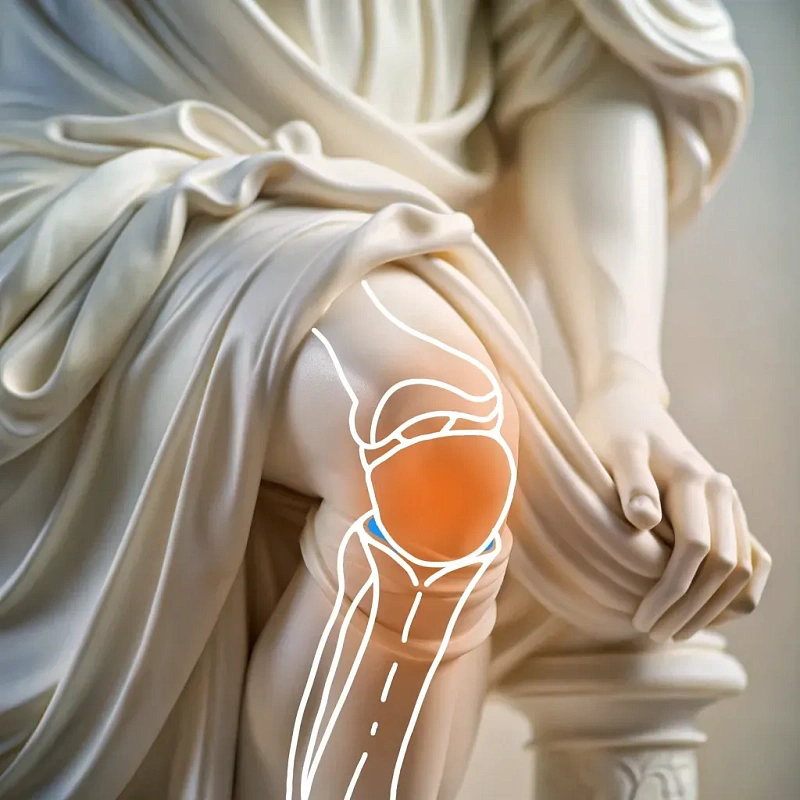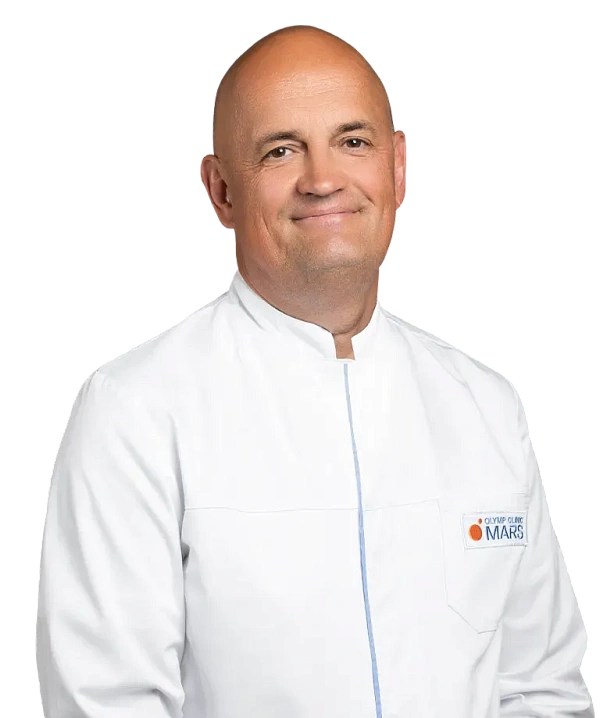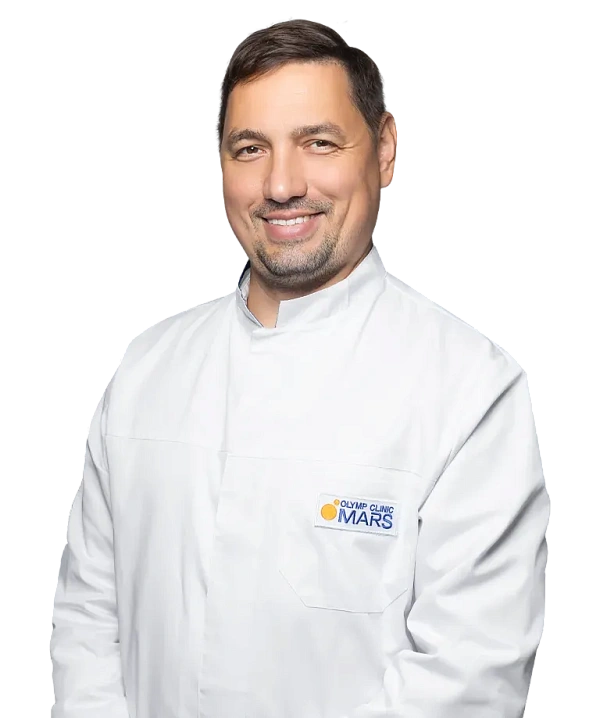Stitching of the meniscus
A strong turn in the knee, a fall, deep squats, sports injury can lead to a meniscus rupture. The modern method of surgical treatment of knee injuries is arthroscopic surgery.

Meniscus rupture is the most common orthopedic pathology that occurs with forced extension in the knee joint, twisting movements.
Athletes most often face this injury: alpine skiers, football players, basketball players, as well as those people who engage in contact sports. People whose knee joints experience heavy loads during work are not immune from meniscus rupture. Trauma can occur even in everyday life. In case of severe meniscus ruptures, arthroscopic stitching is performed. Using instruments with powerful optical imaging, the traumatologist-surgeon stitches parts of the cartilage and restores the overall anatomical structure of the joint.
Clinical analysis of blood and urine Radiography of the knee joint Magnetic resonance imaging (MRI) Consultation with a therapist and specialized specialists such as an orthopedic traumatologist and an anesthesiologist
On the day of the operation, the patient is hospitalized in the morning, and laryngeal mask anesthesia is performed. A camera with instruments is inserted into the joint through micro-injections, with the help of which the condition of the internal structures of the joint is assessed, the damaged cartilage is treated (shaping, ablation) and the damaged part of the meniscus is stitched. The operation lasts an average of 60-90 minutes.
Arthroscopes with high-quality optics Miniature surgical instruments
For the first 3 weeks, the knee joint is fixed in the orthosis. Then therapeutic gymnastics and physiotherapy (magnetotherapy, UVT, kinesiotaping, massage) are performed with a gradual increase in the load on the joint. Full recovery takes 5-6 weeks.
Benefits
Minimal invasiveness
Arthroscopy is performed through small punctures, which reduces the risk of complications and accelerates healing.
High correction accuracy
Modern equipment ensures accurate meniscus repair.
Fast recovery
The minimal trauma of the procedure reduces the rehabilitation time and allows patients to quickly return to normal life.
Good cosmetic effect
Small punctures leave minimal traces, which is important for an aesthetic result.
Frequently Asked Questions
Under what anesthesia is the operation performed?
How long does the operation take?
After what time can you return to normal life?
Didn't find an answer to your question?
You can describe your problem in detail and ask a question to the doctor. He will answer you and help you find a solution
Врачи
Смотреть всех врачейDoctor of Medical Sciences, Professor. Orthopedic Trauma Surgeon. Chief Doctor, Medical Director.
Doctor of Medical Sciences, Associate Professor at the Department of Traumatology and Orthopedics of the RUDN. Head of the Center for Arthroscopy and minimally invasive surgery of the joints of the upper and lower extremities.
Similar referral activities
Arthroscopy of the ankle joint
Ankle arthroscopy is a minimally invasive surgical procedure used to diagnose and treat various diseases and injuries of the ankle joint.
Arthroscopy of the knee joint
Knee arthroscopy is a minimally invasive surgical procedure for the diagnosis and treatment of injuries and diseases of the knee joint. It allows examining the joint for damage and eliminating the identified defects.
Arthroscopy of the elbow joint
Arthroscopy of the elbow joint is a minimally invasive surgical intervention that allows for accurate diagnosis and simultaneous treatment of joint injuries.
Arthrodesis of the joints of the fingers of the hand
The destruction of the joints of the fingers of the hand is accompanied by pronounced pain and impaired functions. Arthrodesis is a surgical intervention in which the affected joint is completely immobilized, which relieves pain and progression of inflammation.
Arthroscopic revision of the cystic joint
The condition of the wrist joints determines the functioning of the hand. Arthroscopic revision is a minimally invasive diagnostic procedure that assesses the condition of the joint tissues, which is necessary for planning subsequent treatment.
Arthroscopy of the shoulder joint
Arthroscopy of the shoulder joint is a minimally invasive surgical procedure designed to diagnose and treat various diseases and injuries of the shoulder joint.

